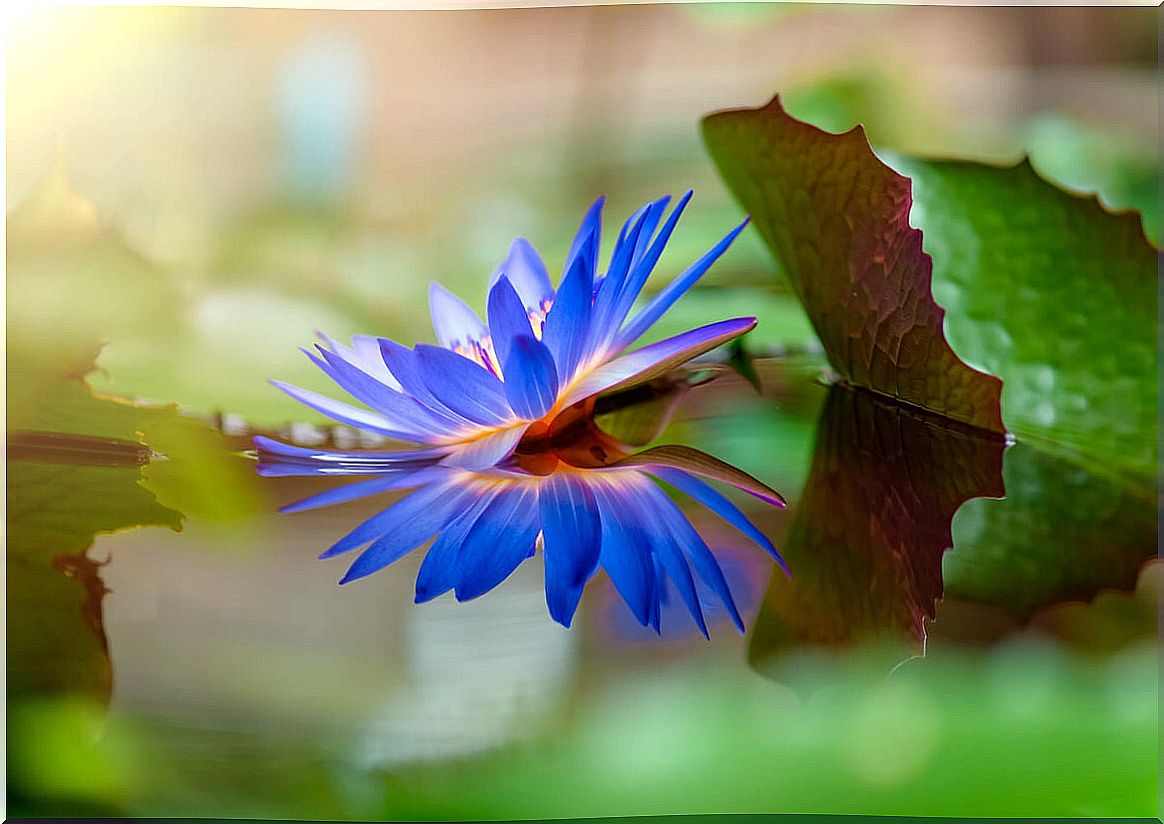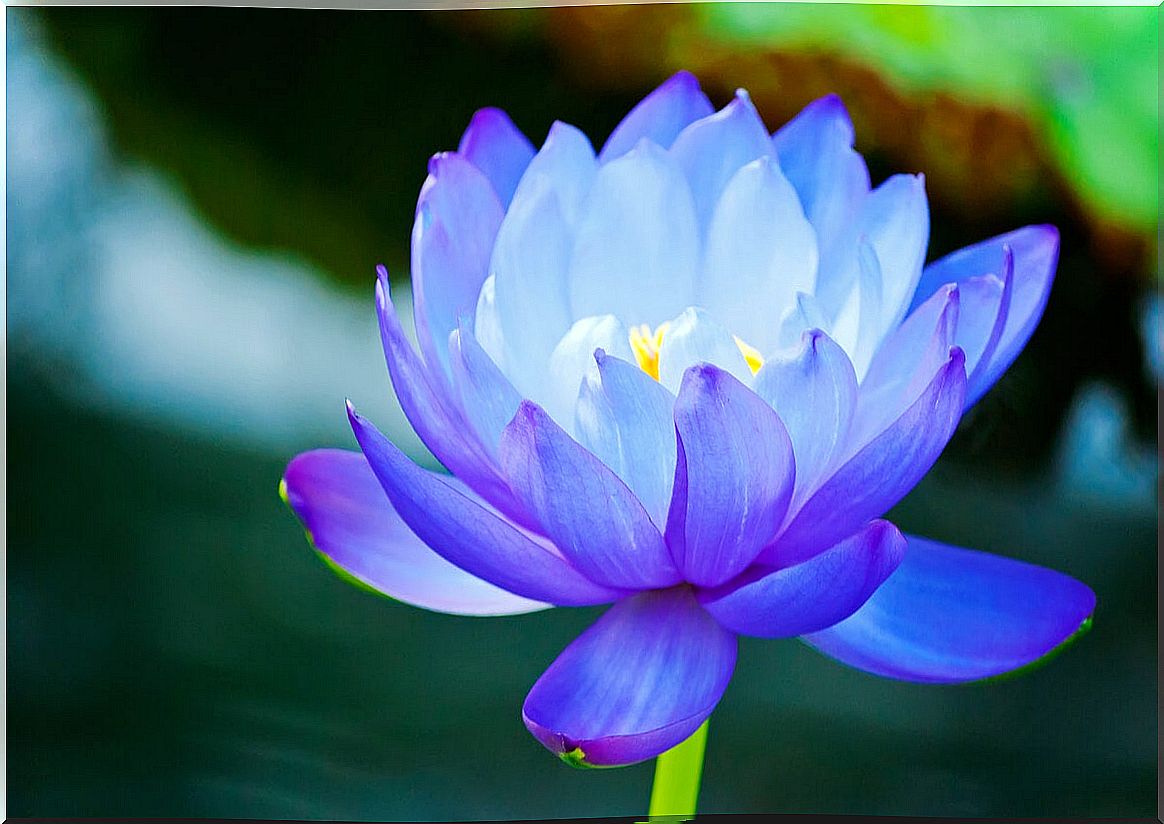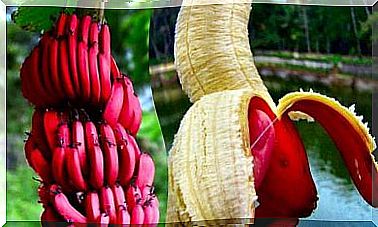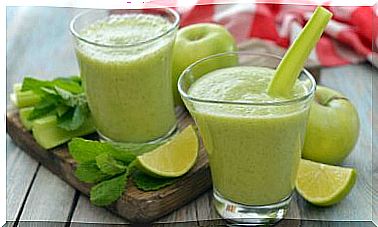Blue Lotus: Uses And Risks
The blue lotus flower is a psychoactive plant that has been used in natural medicine to calm anxiety and insomnia, among other conditions. However, is it safe to use? Here we detail it.

The blue lotus (Nymphaea caerulea) , also known as “Egyptian blue lotus”, “blue water lily” or “sacred blue lily” is a psychoactive plant native to Egypt and certain parts of Asia, where it has great cultural significance. According to historical data, it was used in religious and social rituals, in addition to being used as medicine.
In particular, it was used as a natural aphrodisiac and remedy for anxiety and insomnia. But due to its components, currently warnings are made about its consumption and, in fact, in some places it is prohibited. Do you want to know more about it? Continue reading!
What is the blue lotus and what are its components?
The blue lotus is an Egyptian water lily that stands out for its showy star-shaped flowers, with blue or mauve petals, whose hue fades until it reaches a pale yellow tone on the pistil. It grows on the surface of the water during the summer and can be seen between large floating leaves that also connect to its root.
Despite its use in Egyptian and Asian medicine, today it is listed as a “hallucinogenic plant” or “psychedelic.” According to an article published in the Journal of Psychoactive Drugs , these effects are due to their content of apomorphine and nuciferin, two substances that cause alterations in the mind.
Effects of the components of the blue lotus
- Apomorphine: This psychoactive substance acts as a dopamine agonist. Consequently, it induces feelings of happiness and euphoria. It also has positive effects on muscle control in patients with Parkinson’s disease and erectile dysfunction.
- Nuciferin: according to a publication in the journal Plos One , this substance shares a receptor profile similar to antipsychotic drugs. Therefore, it provokes feelings of relaxation and reduces tension.
Among other things, and as compiled by a study published in Phytochemistry , the blue lotus contains antioxidants such as flavonoids, quercetin, kaempferol and myricetin. These, according to some hypotheses, could also explain its health benefits.

Main uses of the blue lotus
The blue lotus flower, due to its psychoactive action, has traditionally been used for recreational and medicinal purposes. According to popular literature, the plant can improve sleep quality, reduce anxiety, and increase sexual desire. Similarly, it is said to help treat erectile dysfunction.
Despite this, right now there is little evidence to support the potential benefits of the plant. In fact, there are no direct studies that prove that the flower itself can cause improvements in health. The effects attributed to it are explained by its apomorphine and nuciferin content, which are two substances that have been studied.
Apomorphine, according to a review published in Parkinsonism & Related Disorders , acts as a potent, direct and broad-spectrum dopamine agonist, capable of supporting muscle control, especially in conditions such as Parkinson’s.
Meanwhile, the journal Molecules details that nuciferin helps to inhibit pro-inflammatory cytokines, possibly conferring anti-inflammatory effects. The latter adds to its antipsychotic effect that induces feelings of calm.
More evidence is needed
Despite the studies cited, the use of blue lotus as a natural remedy is discouraged. The reason is that there is no research that directly links its use with a decreased risk of disease. Nor is it known what is the ideal way to consume it and in what dose.
Risks and contraindications
Consuming the blue lotus flower, in any of its presentations, can cause a feeling of mild euphoria. Anecdotal data suggest that the sensation is similar to that experienced after consuming cannabis . In any case, its use in humans is not approved in the United States.
The Food and Drug Administration (FDA) labels the flower as poisonous, although it does not classify it as a controlled substance. In other words, it is not illegal to grow, sell or buy it, so it is often found in the form of teas, incense or oils. In countries like Poland, Russia and Latvia it is considered illegal.
Some cases in which it is contraindicated are the following:
- Kids.
- Pregnant or lactating women.
- People with abnormal levels of dopamine and glucose.
It is also not recommended to use it in combination with other substances such as cannabis or alcohol. In addition, due to its effect, it is not advisable to drive or do other activities while the plant is ingested.

How is it used?
Derivatives of the blue lotus flower are often found in specialty holistic wellness stores. It is available in the form of teas, wine, infused spirits, or vaping products. It can also be found in essential oils for massage or aromatherapy.
In all cases it is important to follow the dosage instructions to avoid inconveniences. It is not known if it can cause drug interactions or toxicity. Therefore, it should not be combined with other drugs or overused.
What is there to remember about the blue lotus?
Historical data suggests that the blue lotus has medicinal properties, useful in combating anxiety, insomnia and sexual problems. Still, current evidence has not proven such effects and it is unknown at what dose it is safe and effective. Because of this, entities such as the FDA advise against its consumption.
The plant is marketed in the form of teas, oil and liqueurs. If used, do not exceed the amount suggested on the product packaging. Nor should it be used in combination with medications or if you have a previous illness. If so, it is best to consult your doctor.









